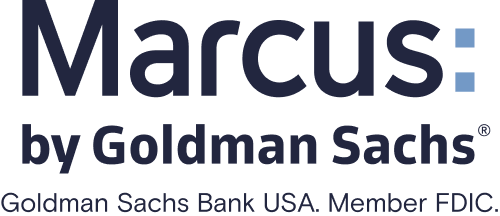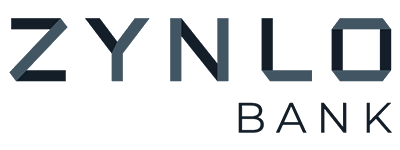States and Metro Areas With the Most Unbanked Households
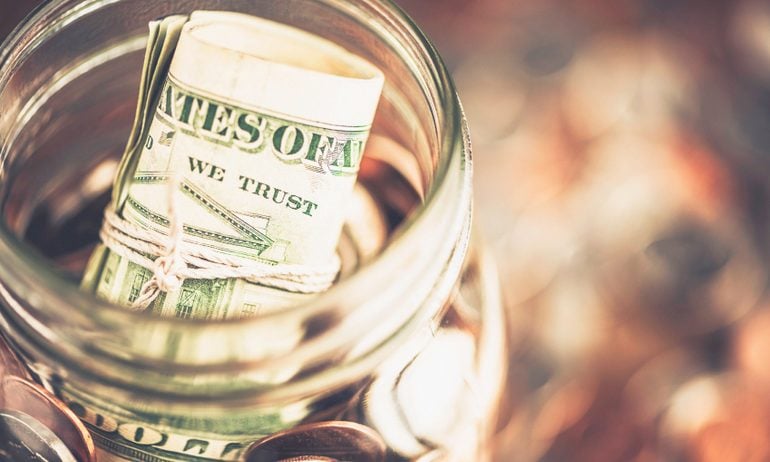
Many, or all, of the products featured on this page are from our advertising partners who compensate us when you take certain actions on our website or click to take an action on their website. However, this does not influence our evaluations. Our opinions are our own. Here is a list of our partners and here's how we make money.
The perks at your local bank go beyond free coffee and candy — they include things you might take for granted, such as free check cashing and loans with reasonable interest rates. However, for the more than 9.5 million unbanked households in the U.S., these services come with a hefty price, one that NerdWallet found adds up to hundreds of dollars a year.
In the U.S., 7.7% of households had no members with a bank account, according to the 2013 FDIC National Survey of Unbanked and Underbanked Households, the most recent full set of data available. That was down from the 2011 version of the Federal Deposit Insurance Corp.’s biannual survey, and the number dropped to 7% in 2015, according to a preview of the latest edition, which will be released in October.
Missed benefits, added fees
Although fewer families are forgoing financial institutions, those who are miss out on savings accounts, in which they can build emergency funds, and secured credit cards that can help build credit. They don’t benefit from the full range of fraud protections that federally insured banks and credit unions offer, and they can’t access online and mobile banking tools that can save them time and money. (Read NerdWallet’s national coverage on the costs of being unbanked to learn more about options for unbanked consumers, like second-chance checking accounts.)
Households that don’t have a bank account also pay loads of fees to expensive alternative financial-service providers. NerdWallet tallied the costs of money orders, check cashing and prepaid debit cards. Unbanked households that use a prepaid debit card that allows direct deposit pay an annual average of $196.50 in fees, while unbanked households that use a prepaid debit card without direct deposit pay an annual average of $488.89 in fees. (See our full methodology for more details.)

Member FDIC
Forbright Bank Growth Savings

3.85%
$0
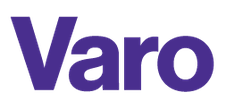
Member FDIC
Varo Savings Account

5.00%
$0
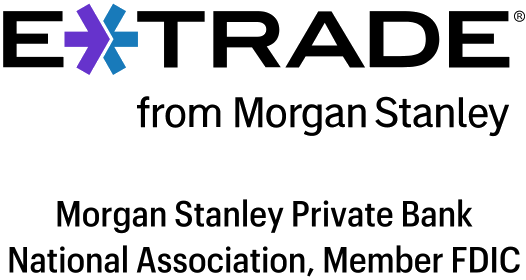
Member FDIC
E*TRADE Premium Savings

3.50%
$0
Unbanked households by state and metro area
We looked at the $196.50 and $488.89 figures as percentages of each state’s 2013 average income for households that don’t have a bank account, based on FDIC data. Explore the map below to see the states where unbanked households are hit the hardest by fees, using both the higher ($488.89) and lower ($196.50) estimates. You can also see which states have the highest percentage of households without a bank account.
The tables below show the percentage of unbanked households in 22 large metro areas and in all states plus Washington, D.C. We calculated the cost of not having a bank account as a percentage of the average unbanked household income in that metro area, as provided by the FDIC. We excluded three major metro areas for which some data were unavailable: San Diego-Carlsbad-San Marcos, California; Sacramento-Arden-Arcade-Roseville, California; and San Antonio, Texas.
Unbanked households by metro area
UNBANKED HOUSEHOLDS BY state
Rank (most to least unbanked) | State | Percentage of all households that are unbanked | Average unbanked household income | Total unbanked costs for all households (lower estimate) | Total unbanked costs for all households (higher estimate) | Average unbanked costs as percentage of income (using higher estimate) |
|---|---|---|---|---|---|---|
1 | Mississippi | 14.5% | $15,394.41 | $31.08 million | $79.82 million | 3.18% |
2 | Louisiana | 13.9% | $20,104.15 | $47.26 million | $121.37 million | 2.43% |
3 | Arizona | 12.8% | $20,300.92 | $61.95 million | $159.07 million | 2.41% |
4 | Arkansas | 12.3% | $15,653.75 | $29.08 million | $74.68 million | 3.12% |
5 | District of Columbia | 11.8% | $14,588.29 | $7.46 million | $19.15 million | 3.35% |
6 | West Virginia | 11.0% | $18,592.82 | $16.56 million | $42.54 million | 2.63% |
7 | New Mexico | 10.9% | $18,934.67 | $17.78 million | $45.67 million | 2.58% |
7 | Georgia | 10.9% | $18,957.70 | $81.64 million | $209.64 million | 2.58% |
7 | Oklahoma | 10.9% | $19,373.49 | $32.56 million | $83.61 million | 2.52% |
10 | South Carolina | 10.5% | $19,724.50 | $38.88 million | $99.84 million | 2.48% |
11 | Texas | 10.4% | $20,621.80 | $191.63 million | $492.07 million | 2.37% |
12 | Kentucky | 9.7% | $15,417.32 | $34.05 million | $87.45 million | 3.17% |
12 | Tennessee | 9.7% | $17,204.81 | $48.51 million | $124.58 million | 2.84% |
14 | Alabama | 9.2% | $18,787.70 | $36.03 million | $92.52 million | 2.60% |
15 | Missouri | 8.9% | $20,058.95 | $42.11 million | $108.12 million | 2.44% |
16 | New York | 8.5% | $16,833.40 | $125.19 million | $321.47 million | 2.90% |
17 | North Carolina | 8.4% | $17,177.65 | $61.46 million | $157.82 million | 2.85% |
18 | New Jersey | 8.2% | $21,298.78 | $51.25 million | $131.61 million | 2.30% |
19 | California | 8.0% | $22,211.31 | $206.18 million | $529.45 million | 2.20% |
20 | Nevada | 7.9% | $19,047.68 | $17.06 million | $43.80 million | 2.57% |
21 | Illinois | 7.4% | $21,036.78 | $71.47 million | $183.53 million | 2.32% |
22 | Ohio | 7.2% | $18,777.16 | $65.61 million | $168.47 million | 2.60% |
22 | Indiana | 7.2% | $22,675.18 | $36.28 million | $93.17 million | 2.16% |
24 | Montana | 6.6% | $11,963.24 | $5.35 million | $13.74 million | 4.09% |
25 | Virginia | 6.5% | $19,340.75 | $39.67 million | $101.88 million | 2.53% |
26 | Colorado | 6.4% | $22,159.12 | $25.84 million | $66.36 million | 2.21% |
27 | Rhode Island | 6.2% | $18,543.22 | $5.12 million | $13.15 million | 2.64% |
27 | Florida | 6.2% | $19,376.05 | $95.70 million | $245.73 million | 2.52% |
29 | Delaware | 6.1% | $22,921.16 | $4.33 million | $11.12 million | 2.13% |
30 | Kansas | 6.0% | $21,820.97 | $13.49 million | $34.64 million | 2.24% |
31 | Massachusetts | 5.8% | $22,086.69 | $29.38 million | $75.45 million | 2.21% |
32 | Nebraska | 5.7% | $15,622.98 | $8.47 million | $21.76 million | 3.13% |
32 | Michigan | 5.7% | $19,127.41 | $42.44 million | $108.99 million | 2.56% |
34 | Connecticut | 5.6% | $21,036.57 | $15.37 million | $39.48 million | 2.32% |
34 | Wyoming | 5.6% | $24,067.11 | $2.65 million | $6.82 million | 2.03% |
36 | Idaho | 5.4% | $17,444.44 | $6.39 million | $16.42 million | 2.80% |
37 | Pennsylvania | 5.2% | $17,820.47 | $52.14 million | $133.90 million | 2.74% |
38 | Wisconsin | 4.8% | $16,495.70 | $21.75 million | $55.85 million | 2.96% |
38 | Maryland | 4.8% | $24,470.06 | $20.81 million | $53.43 million | 2.00% |
40 | Oregon | 4.5% | $16,345.12 | $13.62 million | $34.98 million | 2.99% |
40 | Iowa | 4.5% | $18,571.62 | $10.83 million | $27.81 million | 2.63% |
42 | South Dakota | 4.2% | $16,040.68 | $2.67 million | $6.86 million | 3.05% |
43 | Washington | 4.1% | $17,048.35 | $21.07 million | $54.10 million | 2.87% |
44 | Hawaii | 3.8% | $21,096.90 | $3.41 million | $8.77 million | 2.32% |
45 | Minnesota | 3.6% | $16,228.27 | $14.92 million | $38.31 million | 3.01% |
46 | Utah | 3.3% | $21,617.24 | $6.11 million | $15.68 million | 2.26% |
47 | Vermont | 3.1% | $22,553.77 | $1.59 million | $4.08 million | 2.17% |
48 | New Hampshire | 2.9% | $26,653.71 | $3.00 million | $7.71 million | 1.83% |
49 | North Dakota | 2.8% | $22,645.30 | $1.58 million | $4.06 million | 2.16% |
50 | Maine | 2.4% | $14,906.68 | $2.57 million | $6.59 million | 3.28% |
51 | Alaska | 1.9% | $21,299.66 | $1,002,022.57 | $2,573,028.07 | 2.30% |
Key takeaways
1. The rate of unbanked households is disproportionately high among low-income households: Nationally, 7.7% of households didn’t have a bank account in 2013, but that rate was noticeably higher among low-income households. Nearly 20% of households with incomes less than $30,000 were unbanked and 24% were underbanked, meaning they had at least one savings or checking account but had used at least one alternative financial service in the past year. These types of services include check cashing, money orders and payday loans. More than a third (35.6%) of unbanked households surveyed for the FDIC report said the main reason they didn’t have an account is that they don’t have enough money to keep in an account or to meet a minimum balance. (Note that many free checking accounts don’t require minimum balances.) Other common reasons included dislike or distrust of banks and high or unpredictable account fees.
The national correlation between unbanked and low-income households translates to the state level. Seven of the 10 states with the highest percentages of unbanked people are among the 10 states with the lowest median household incomes, according to the 2013 U.S. Census American Community Survey. In fact, excepting Washington, D.C., the nine states with the highest concentration of unbanked households had household incomes below the 2013 U.S. median of $52,250.
2. The costs of being unbanked hit low-income households the hardest: Income among households that don’t have a bank account is particularly low. The 2013 average post-tax income of unbanked households in the U.S. was $17,359, and was lowest in Montana at $11,963.
Remember that unbanked households that use a prepaid debit card without direct deposit pay an average of $488.89 in fees annually. In Montana, that would consume upward of 4% of the average unbanked household’s income. For context, the average U.S. household spent about 3.5% of its post-tax income on gas and motor oil in 2015, according to the U.S. Bureau of Labor Statistics.
In Washington, D.C., the difference in earnings between banked and unbanked households is vast. The average 2013 income for fully banked households in D.C. was $55,032, but it was just $14,588 for households without a bank account. That latter number can’t go far in a place where low-income housing opportunities are diminishing. According to a D.C. Fiscal Policy report, in 2013, there were roughly half as many Washington apartments renting for less than $800 per month than there were in 2002. The report suggests "subsidized housing is now virtually the only source of inexpensive apartments."
3. Local unbanked demographics reflect national trends: According to the FDIC, one-fifth of black households (20.5%) in the U.S. in 2013 were unbanked, followed by Hispanic (17.9%) and American Indian/Alaskan households (16.9%). Only 2.2% of Asian households were unbanked, which was a lower concentration than for white (3.6%) and Hawaiian/Pacific Islander (6.1%) households.
Many of the places with the highest concentration of unbanked households mirror these national demographics. In No. 12 Tennessee and No. 2 Louisiana, each state's biggest city has a majority of black households, with Memphis at 63% and New Orleans at 59.8%. Phoenix, which tops our list of unbanked metros, has a large Hispanic community, as does Albuquerque, the largest city in New Mexico, which tied for seventh among the states. Two states with the highest percentages of unbanked populations, New Mexico and Oklahoma, have American Indian populations nearly 10 times that of the U.S. as a whole.
4. Limited access to in-person and online banking hurts: It’s hard to open a bank account when there are no branches where you live. More than half the ZIP codes in the mid-South are “bank deserts,” meaning they have just one or zero bank branches, according to the Mississippi-based Hope Policy Institute, which analyzes financial inclusion. In the institute’s analysis, the mid-South includes Mississippi, Louisiana and Arkansas, which have some of the highest rates of unbanked households. The region also includes western Tennessee, home to Memphis, where nearly one-fifth (19.5%) of households don’t have a bank account.
Brick-and-mortar branches are even more important for consumers who can’t connect to financial institutions online. Some Memphis residents face hurdles to both methods. According to the U.S. Census Bureau’s 2013 American Community Survey, 27.7% of Memphis households didn’t have an internet connection, compared with 21.4% nationwide. Lack of internet access is high in New Orleans, too, at 27.4%.
Sreekar Jasthi is a data analyst at NerdWallet, a personal finance website. Email: [email protected]. Laura McMullen is a staff writer at NerdWallet. Email: [email protected]. Twitter: @lauraemcmullen.
Methodology
Income and concentrations of unbanked households
To calculate the average income for unbanked households nationwide and in each state, we used data from the 2013 FDIC National Survey of Unbanked and Underbanked Households. To determine which metro areas to analyze, we first chose the 25 in the FDIC report that had the largest number of households. We omitted San Diego-Carlsbad-San Marcos, California; Sacramento-Arden-Arcade-Roseville, California; and San Antonio, Texas, because of insufficient income data.
Figures for the percentage of unbanked households in each state and metro area are also from the FDIC report.
Fees associated with being unbanked
We arrived at the range of $196.50 to $488.89 in fees for the average unbanked household by adding the fees associated with cash checking, money orders and prepaid debit cards. The cost of these fees depends in part on whether these households’ prepaid debit cards allow direct deposit.
To determine the check-cashing costs for unbanked households using prepaid debit cards without direct deposit and unbanked households using only cash, we assumed two paychecks cashed per month and a fee of 1% of a check’s total value. For households using prepaid debit cards with direct deposit, we factored in $0 for check cashing. For both household types, we assumed one money order sent per month with an average fee of $1.40.
To calculate the average check cashing and money order fees, we used the FDIC’s data on the frequency of alternative financing services use by type of household (banked or unbanked), then applied the lower frequency of use among banked households to the average costs.
To calculate the average annual cost of prepaid debit cards, we looked at 69 cards, based on major issuers, high-traffic search volume, Pew Charitable Trust’s February 2014 report and the card offerings listed on Visa’s and MasterCard’s websites. For cards with multiple plan options, we counted each plan as a separate card.
The analysis includes the annual costs of a prepaid debit card with and without direct deposit for payroll. The median monthly fee used was $4.98, and the median out-of-network ATM fee used was $2.50. We used the maximum cash loading fee of $4.95.
Without direct deposit, we assumed 12 monthly fees, four ATM fees per month and two cash loading fees per month. PIN- and signature-based purchase transaction fees typically don’t apply to cards that have monthly fees, so we excluded them.
Upcoming FDIC survey
A recent preview of the 2015 FDIC National Survey of Unbanked and Underbanked Households, set to be released in its entirety on Oct. 20, 2016, revealed that the unbanked rate has fallen to 7%, or about 8.6 million households. NerdWallet’s analysis is based on the most recent full set of data available.








